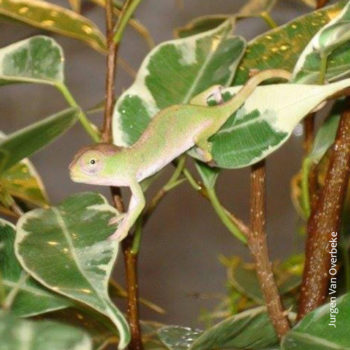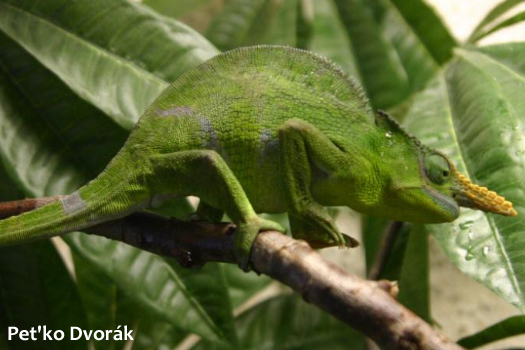Kinyongia matschiei Natural History
Kinyongia matschiei lives in a mountain range in the Northern Eastern corner of Tanzania. Around 1500 meters in elevation, we find the largest of the blade-nosed species.
Kinyongia matschiei is an impressive chameleon with a prominent dual-blade horn coming from its nose region. Interestingly, it is one of the few species to live in the same area as another chameleon species, Kinyongia vosseleri. These two species are so similar, they would be indistinguishable to the untrained eye! Unlike vosseleri, the blade horns of Kinyongia matschiei are found in both males and females. The females’ horns are relatively short, but the males can have horns up to 20mm!
Common names for Kinyongia matschiei include the Giant East Usambara Blade-horned Chameleon and the Giant Monkey-tail Chameleon due to its wonderfully long tail.

Captive Husbandry
Jurgen Van Overbeke is a chameleon breeder in Belgium who has extensive experience with a wide range of chameleon species. Here, he shares his experience in reproducing Kinyongia matschiei:
“Kinyongia matschiei is known as the Giant Monkey-tail Chameleon. It is a Tanzanian species and the largest of the fischeri complex. It was never imported in large numbers. Around 5-6 years ago I was able to import 15 animals.
They need a very large terrarium as they move around a lot, are fast, and curious. The terrarium must be well planted, as they are also a shy species. Hydration is important for this species and they are kept under the typical montane conditions.
Feeding was not difficult. They would eat anything that would fit in their mouths. They were especially fond of silkworms.
It was important for me to treat them for parasites, and after a few treatments they started showing bright colors and were a very hardy chameleon. I got mine as adults and they lived for another five years. This is a long-lived species.
Gestation is two months with a 13 month incubation. There was 100% hatch rate at room temperature. Babies are born with a huge tail and are very beautiful. I was able to produce many clutches of healthy babies, but there wasn’t enough interest in the community to find homes for them. So the babies were dispersed and now, with the Tanzania ban in effect, the Giant Monkey-tailed Chameleon is gone from European breeding groups.”

Hatchling and Juvenile Kinyongia matschiei



Young Male Kinyongia matschiei


Adult Male (Left) and Female (Right) Kinyongia matschiei




